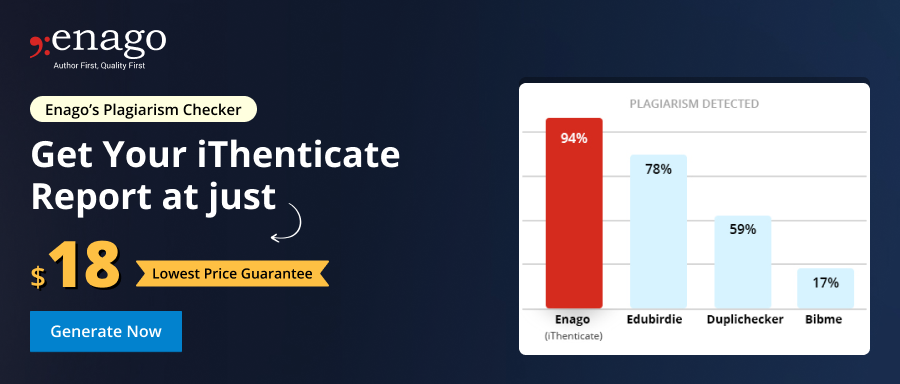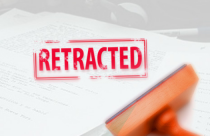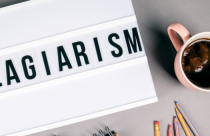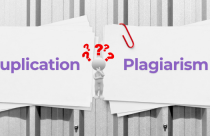Reliable and Affordable Plagiarism Detector for Students
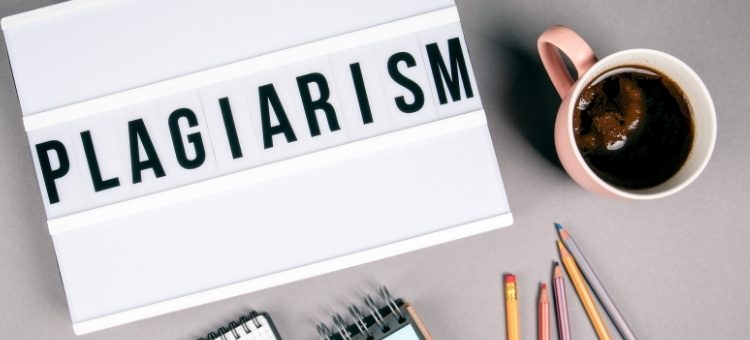
Did you know? Our senior has received a rejection from a reputed journal! The journal editors said they found a lot of plagiarized content. How come he never used a plagiarism detector? There are so many tools on internet. Now he will have to rework on the whole paper and go through paper submission process again!
As a researcher, you will agree how tedious the process of paper publishing is! Therefore, it is not worthy to go through this process again due to plagiarized content. Detecting it in your paper is not a difficult task, if you know which tool to use.
In this article we will discuss about plagiarism tools for students that are trustworthy and user-friendly, and how to manage plagiarism detectors to eliminate intentional, reckless, or unintentional plagiarized content.
What Is Plagiarism?
Broadly speaking plagiarism is defined as copying another person’s work or borrowing someone else’s original idea, without giving due credit. However, when it comes to plagiarized content in research publishing –
- Showing someone else’s work as your own,
- Repeating words or ideas from someone else without giving credit,
- Not putting quotation marks to quotations,
- Providing incorrect information about the source from where the quote was taken,
- And using images, videos or audio without providing proper citations is plagiarism.
How Does Plagiarism Affect the Research Community?
Due to the world of digitization and inappropriate reuse of resources from internet, plagiarism largely affects academic research. In olden days, it was easier to detect plagiarism, but with the increase in use of electronic media and online journals dishonesty and academic fraud is difficult to detect.
It injures the research ethics and integrity. It questions the researchers, professors or students of their credibility and can lead to severe punishments such as suspension and lose of authority.
However, there has been a rise in detection software which can assist researchers, professors, and students in identifying the copied content. Moreover, the software are well tested, widely available, affordable and easy to us. Furthermore, the software can help users identify self-plagiarized content, which they themselves are not aware of.
Why Is Plagiarism Detector Important for Students?
Even after seeing a constant rise in dependency on plagiarism detectors, most of the students are still unaware and ignorant about the use of plagiarism checker tools and ways to avoid plagiarism.
Moreover, many students hesitate to use plagiarism detectors because they believe their research content is genuine. However, even best writers fall prey to accidental plagiarism and thus need to resort to plagiarism detectors.
1. Plagiarism Detectors Can Provide more References and Wider Cross-reference Repositories
Internet is a hub for pool of data. The search engines cannot do justice to the vastness of research data available. However, plagiarism checkers provide more references and wider range of cross-reference repositories. In fact, you could find books and articles that are included in the repositories with plagiarism programs which cannot be found directly on search engines.
2. Highlighting Content Becomes Easier for Detecting Plagiarism
It is challenging to search sentence by sentence for an accidental presence of plagiarism. However, plagiarism checker for students shows the material that is compared in the results. Furthermore, you will get the details about sources of the original content, and you could also access the site of source.
3. Gives You Thorough Data of Comparisons or Matches
Plagiarism checker for students provides a total percentage of comparisons or matches. Universities often have an agreed standard of percentage that students need to adhere to. Therefore, plagiarism detector can help students eliminate any issues that suspect plagiarism.
4. Resort to Plagiarism Checkers Instead of Paraphrasing
These tools save your time and effort, as compared to paraphrasing services. Furthermore, plagiarism detectors highlight any work that is similar to the original text of the author and fix the sentence if you could not correctly paraphrase and quote the test.
5. Using Plagiarism Checker Proves Your Honest Intentions
You could provide the plagiarism results which submitting the assignments, as a necessary precaution, if you are questioned regarding plagiarized content. Also, this shows your honest intention of creating unique content and could be given a benefit of doubt for unintentional or accidental plagiarism.
How Does Plagiarism Detector Work?
The tools use advanced database software to scan for a match between your text and existing text. These detection tools crawl web content and index it, they further scan your text and check for similarities against the database of existing content. Furthermore, keyword analysis highlights exact matches.
A user usually gets results in the form of plagiarism percentage, highlighted plagiarized content, and the list of sources. Though most of the free plagiarism checkers for students operate similarly, there are some differences between them that affect the types of plagiarism that they can detect.
Examples of plagiarism checker tool and how they generate user-friendly results —
Enago’s plagiarism checker is one of a kind tool for quick, comprehensive, and dependable plagiarism checking. It not only provides plagiarism percentage with color-coded system but also enlists sources that have similarities with your document. It is easy to access with one click upload button.
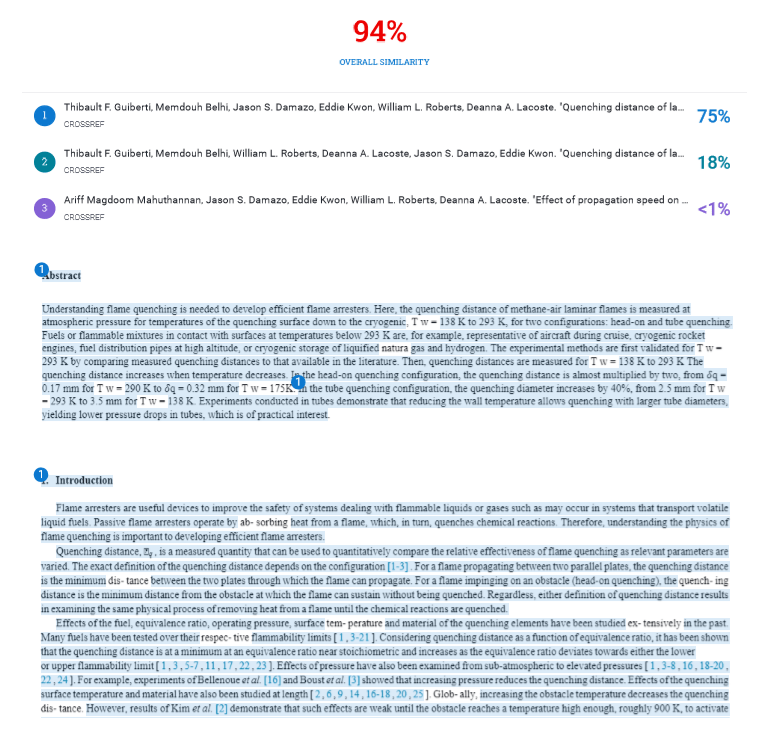
The added feature of AI-based grammar check allows you to improve your document by correcting errors typical to academic and formal writing, such as spelling, grammar, and tone. Additionally, Enago’s plagiarism checker has power editing mode like none other. It enhances your document by correcting sentence structure, word choice, subject-specific phrasing, and much more.

Conclusion
There are many online plagiarism detection tools and they raise the question about data safety and security. Researchers are insecure about using these tools. However, there is no fear in using tools that provide paid and authentic services. You could do a thorough research on the detecting tools before buying their service.
Meticulous or not, you may accidentally plagiarize your content and it is best to use an accurate software eyes to review your content.
Have you used any of the above mentioned plagiarism tools? How was your experience throughout the process? Do write to us or comment below!





